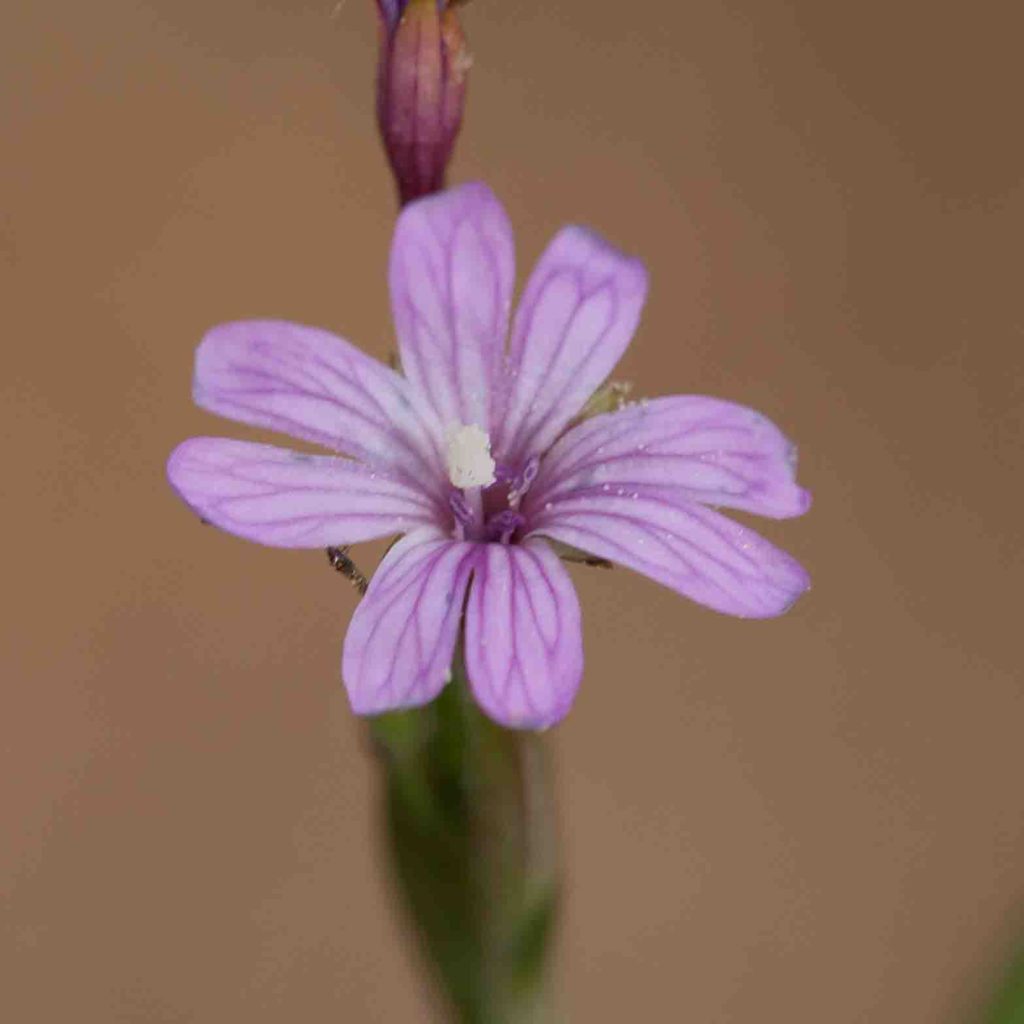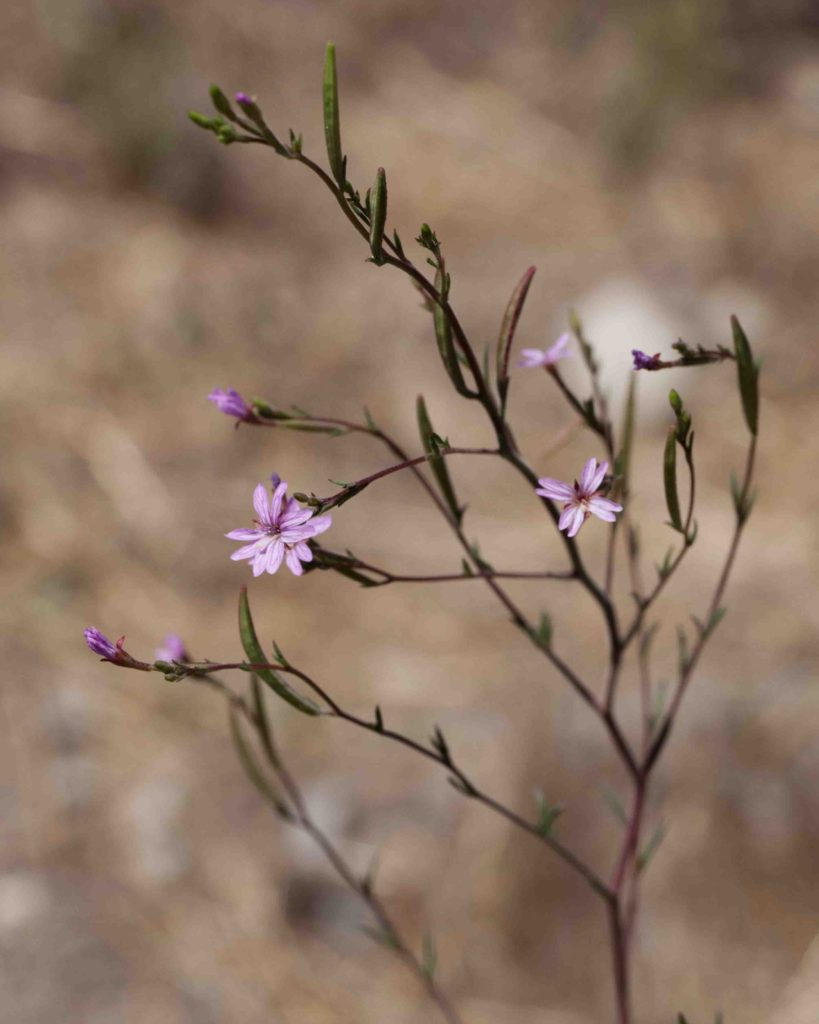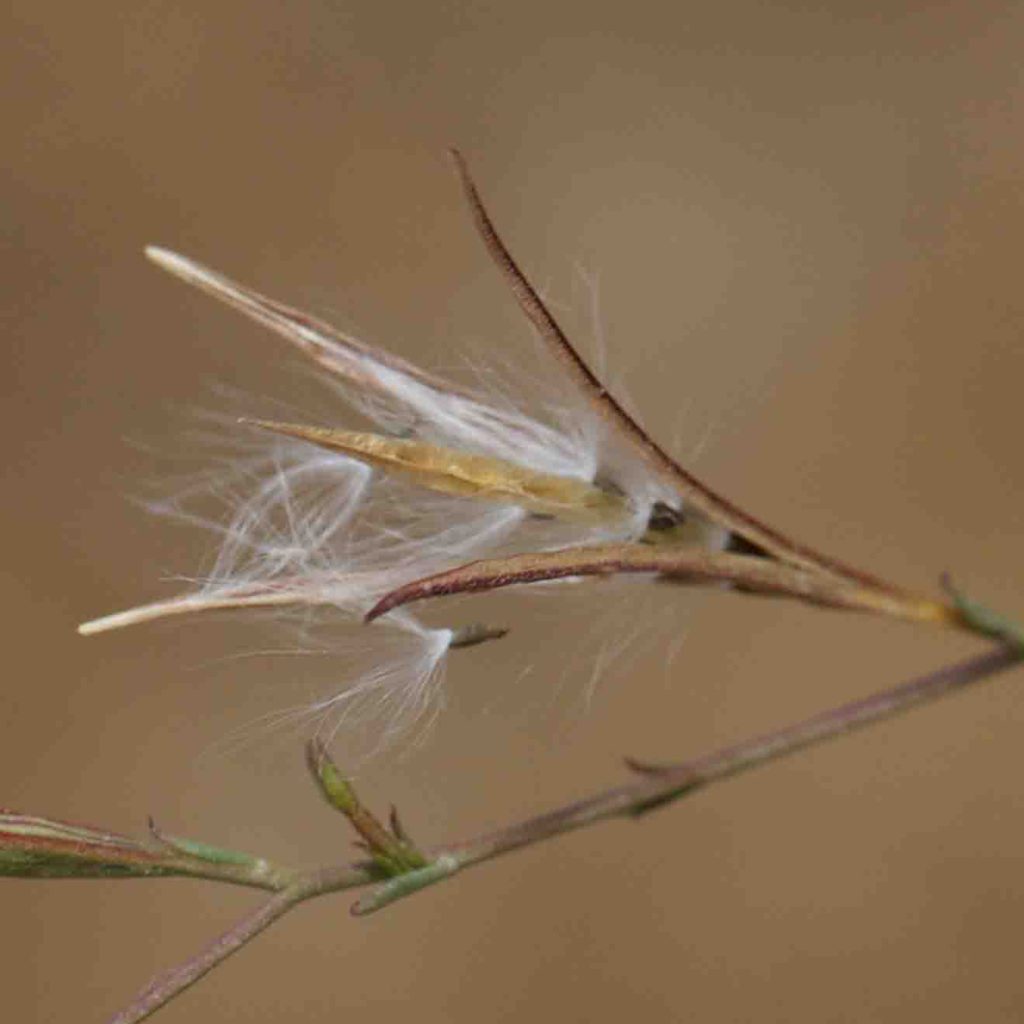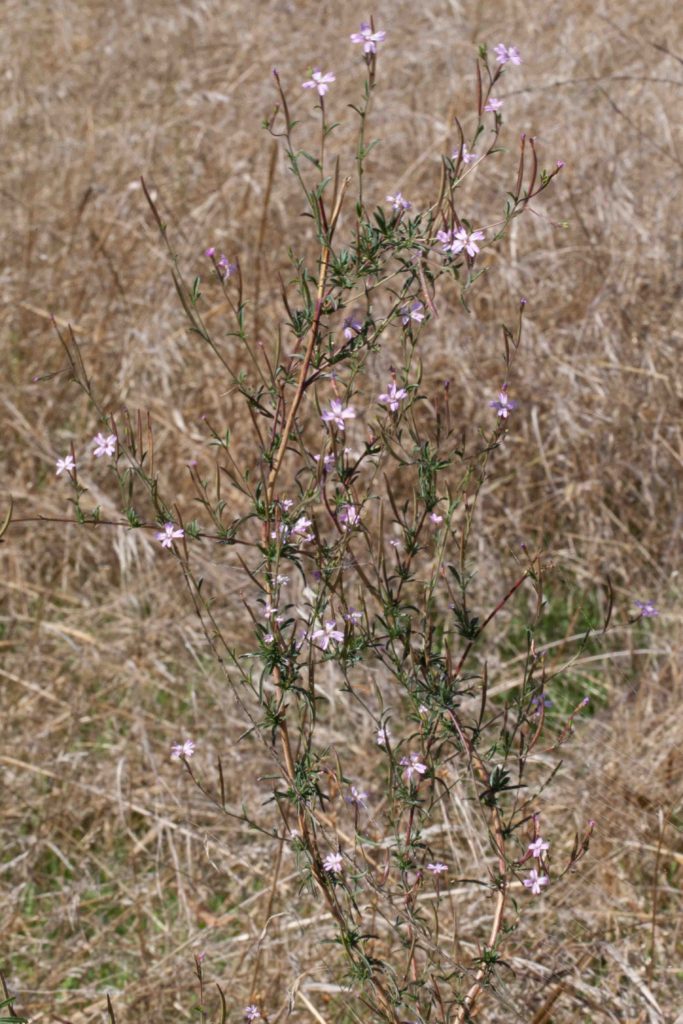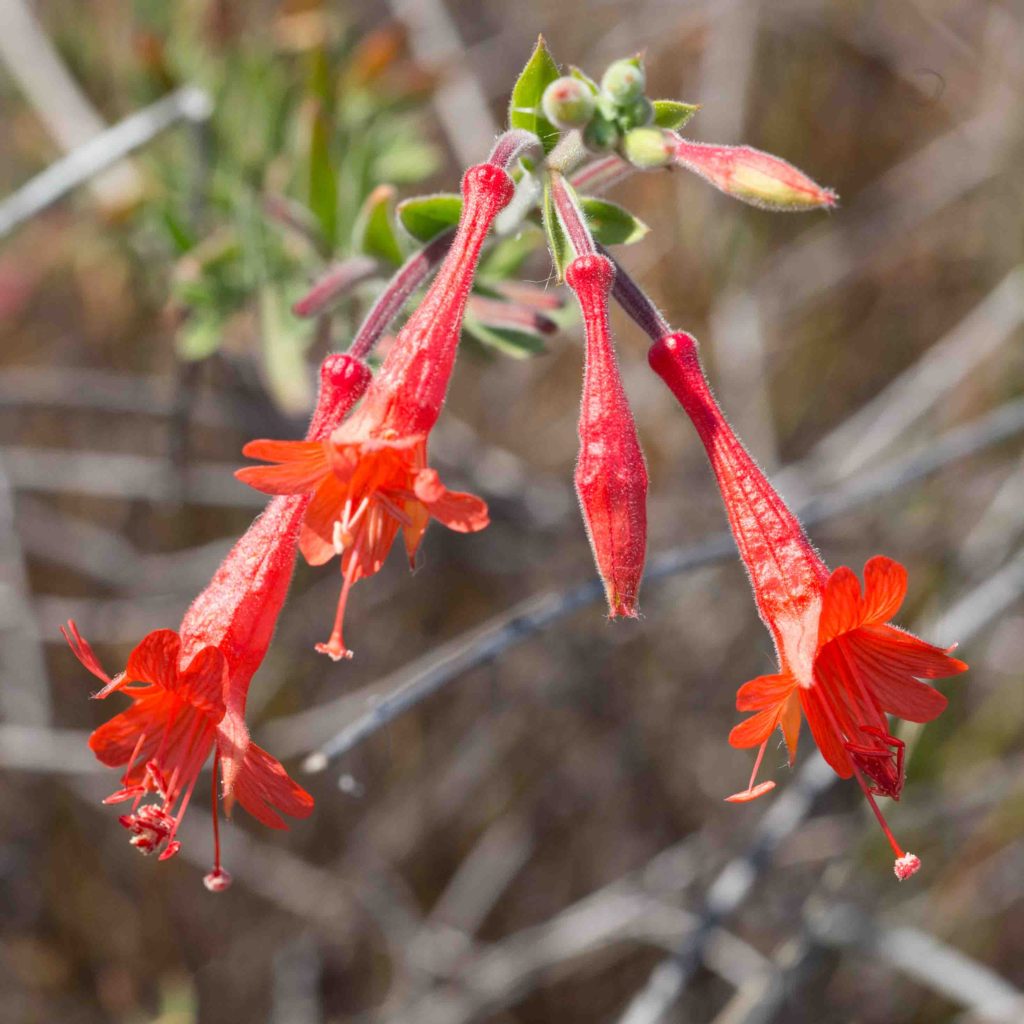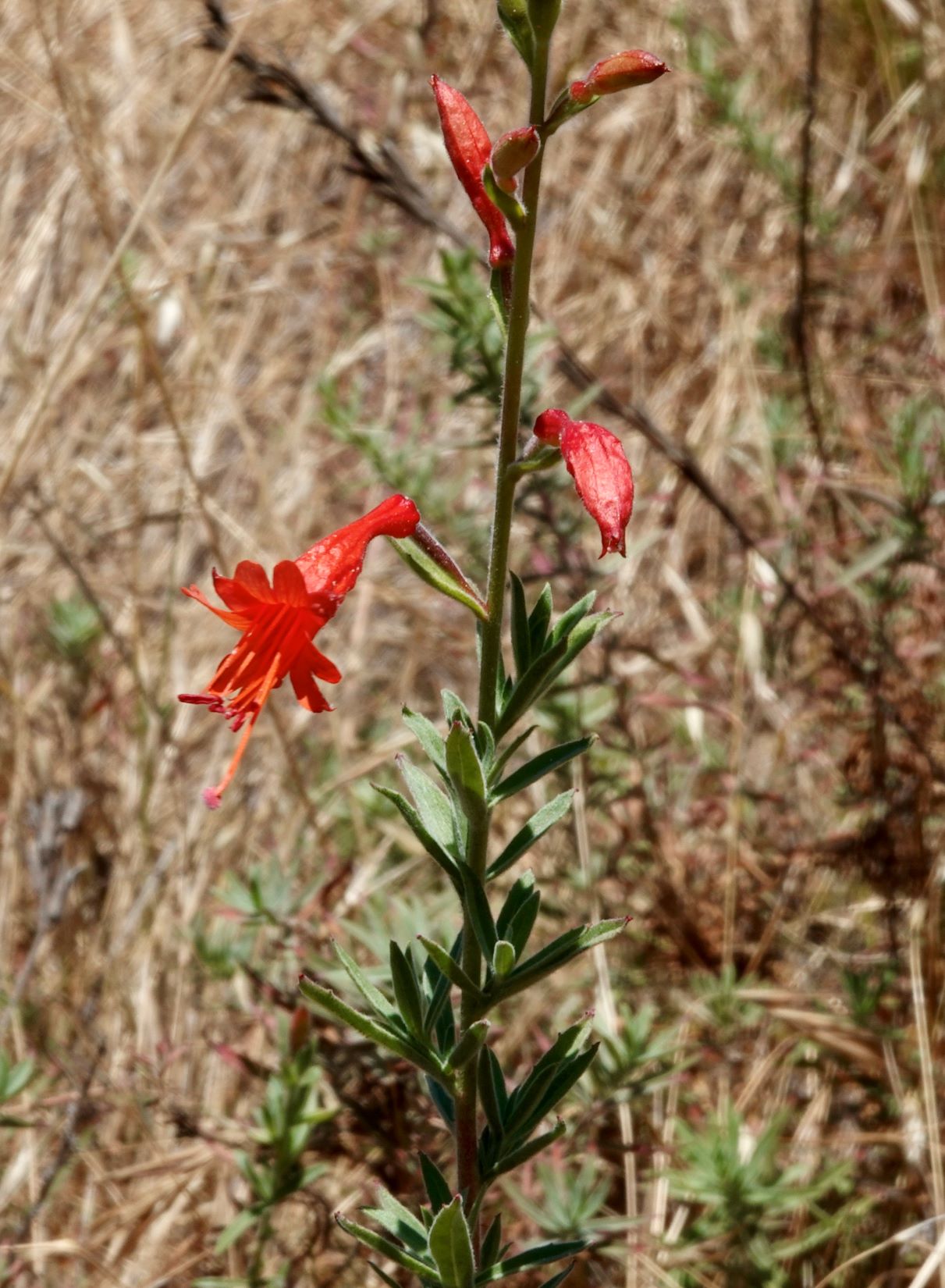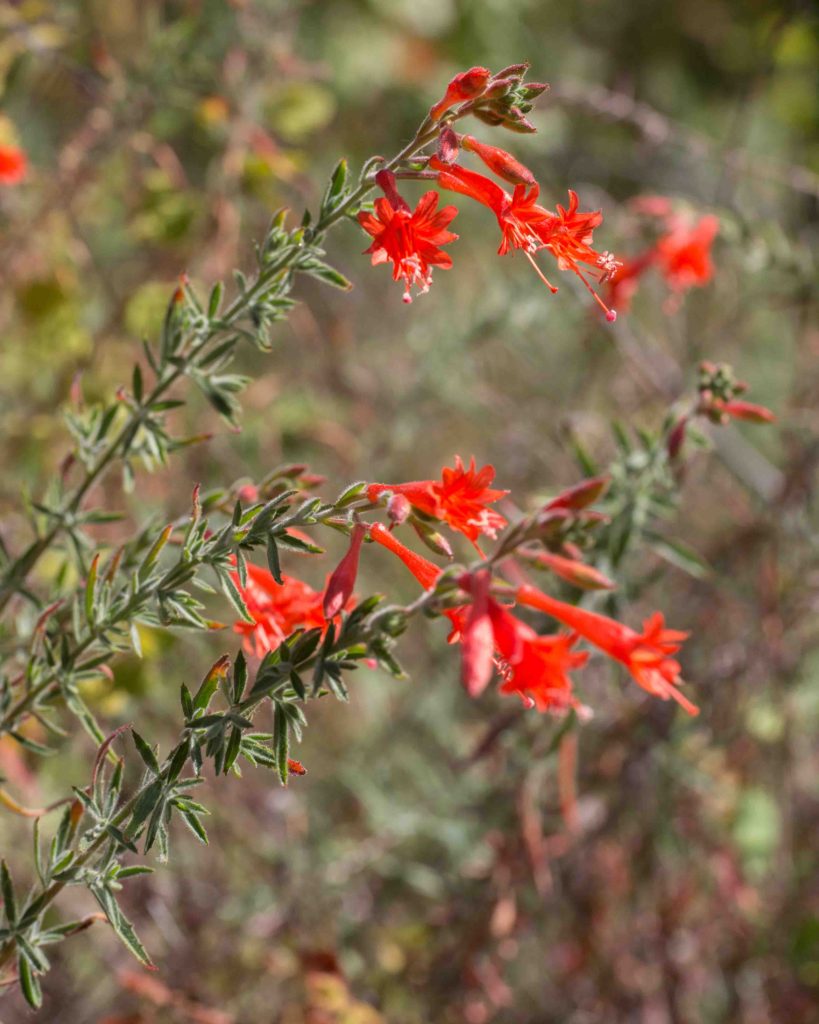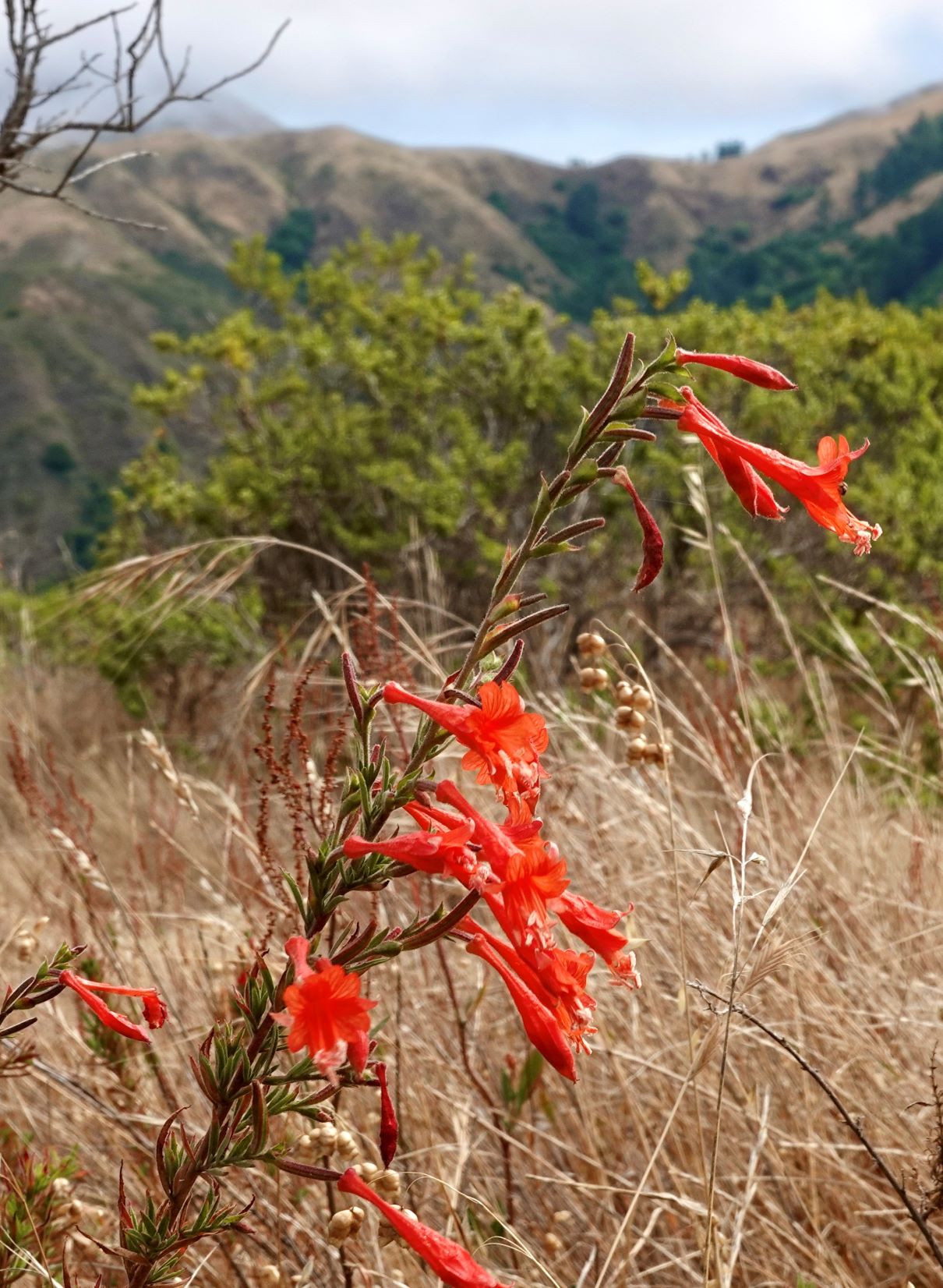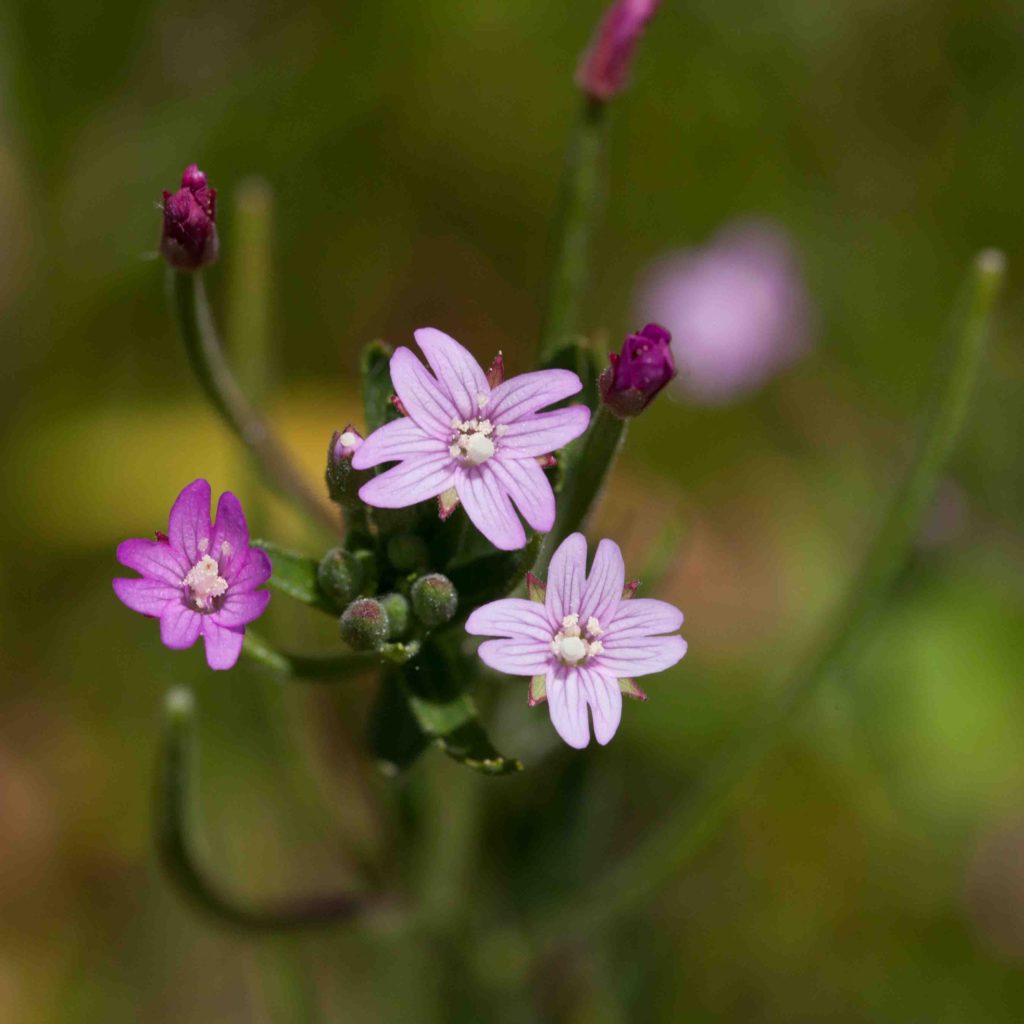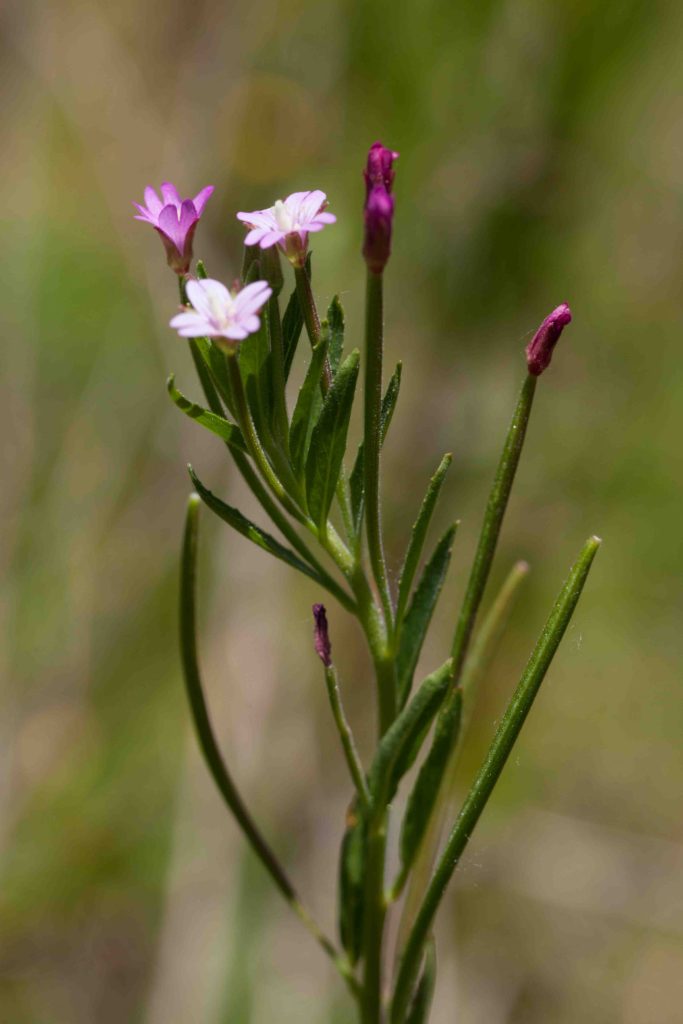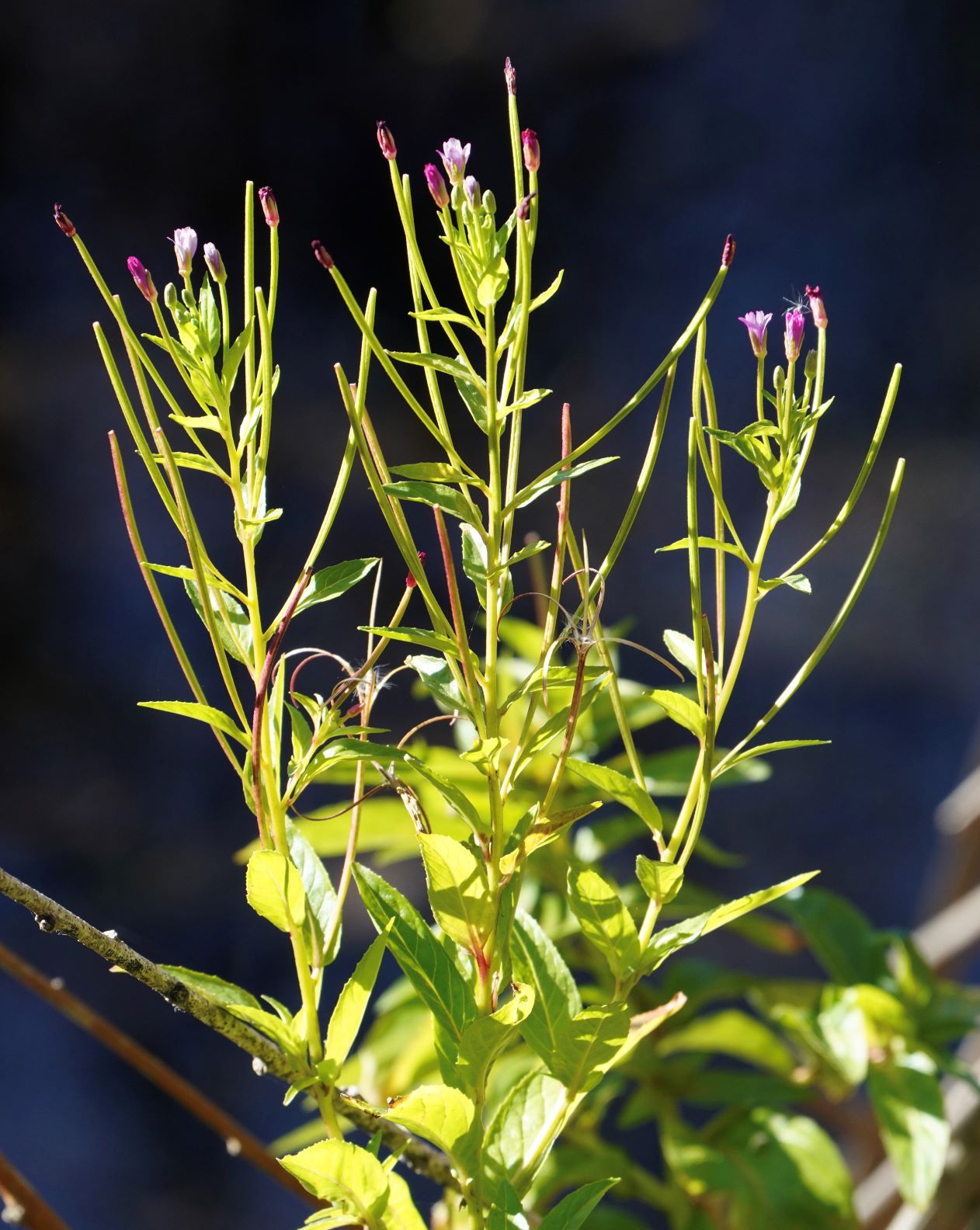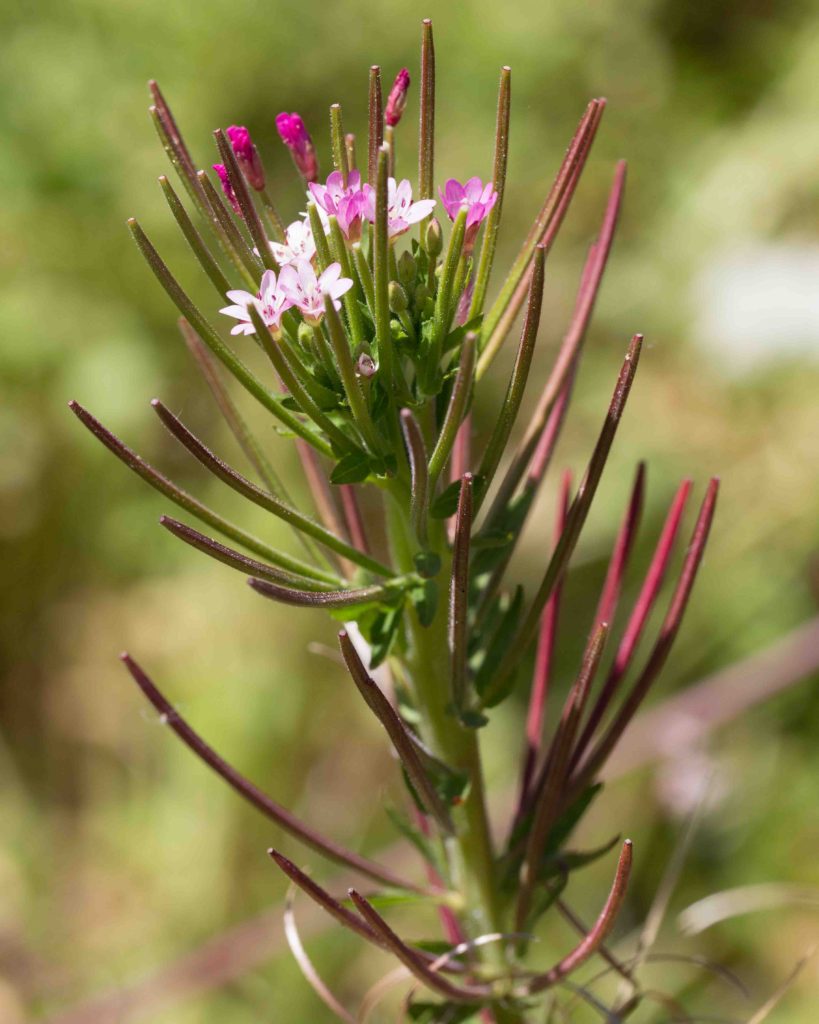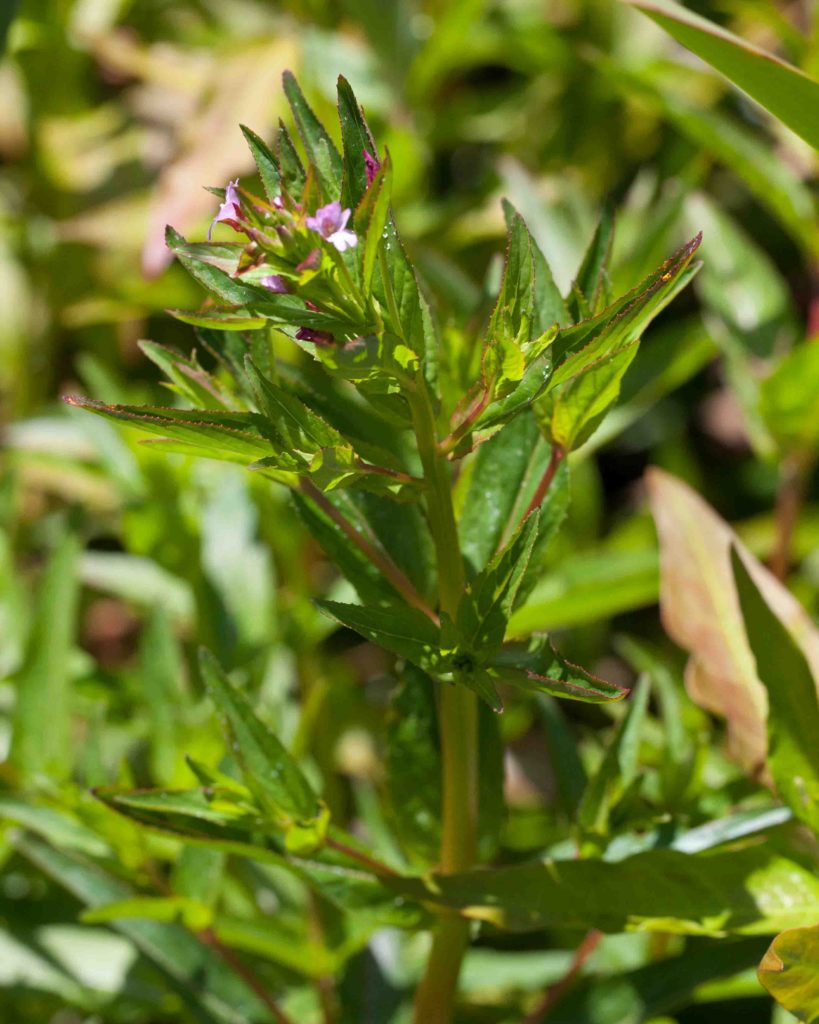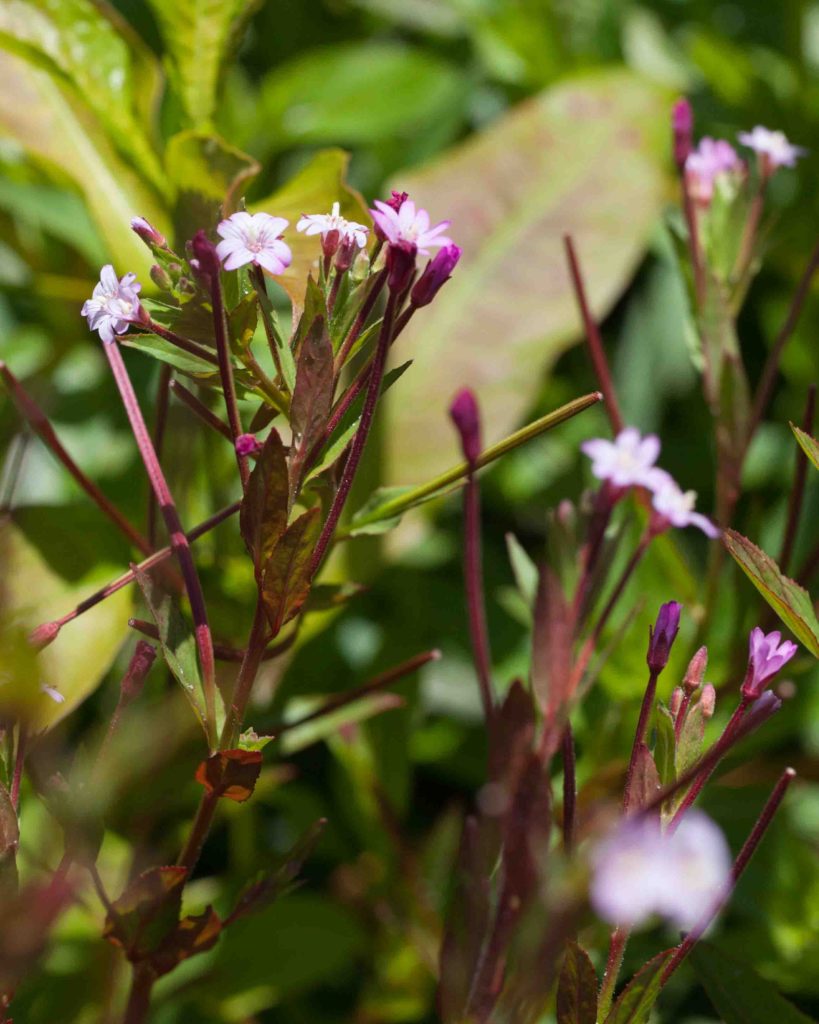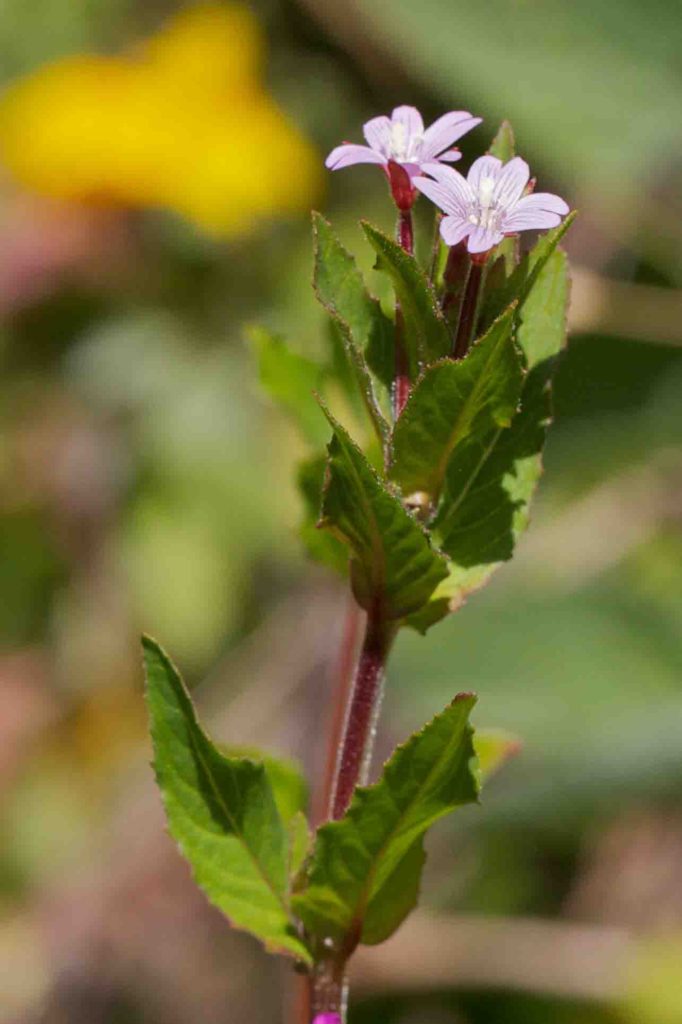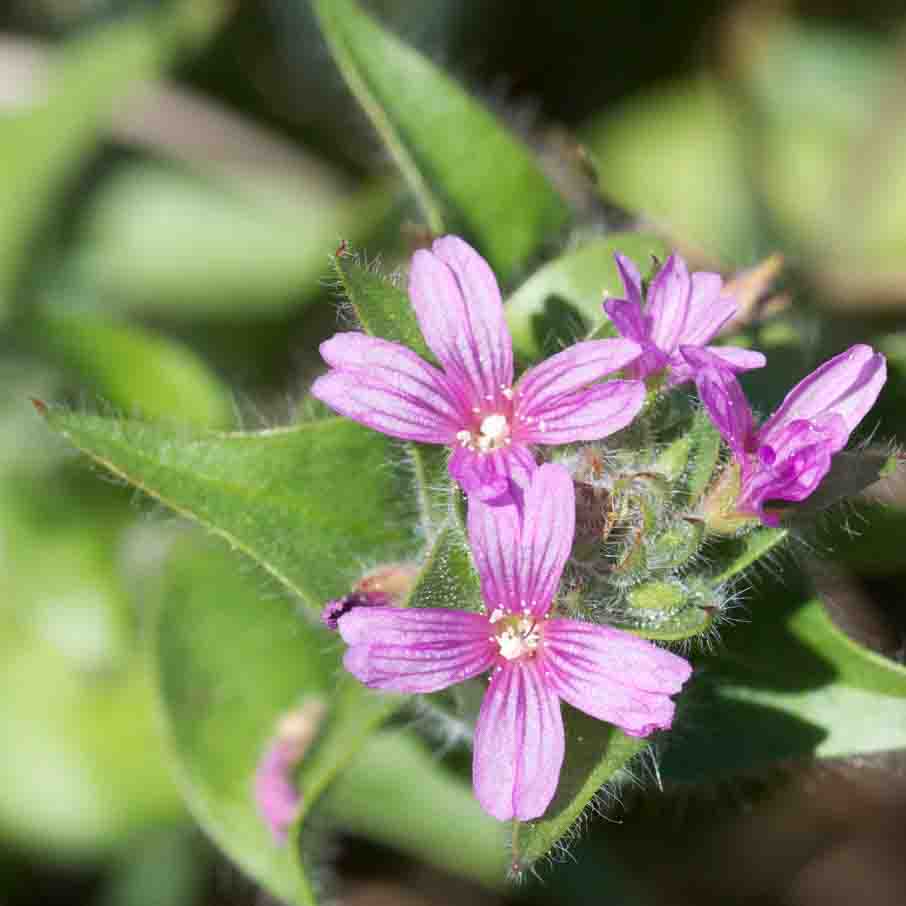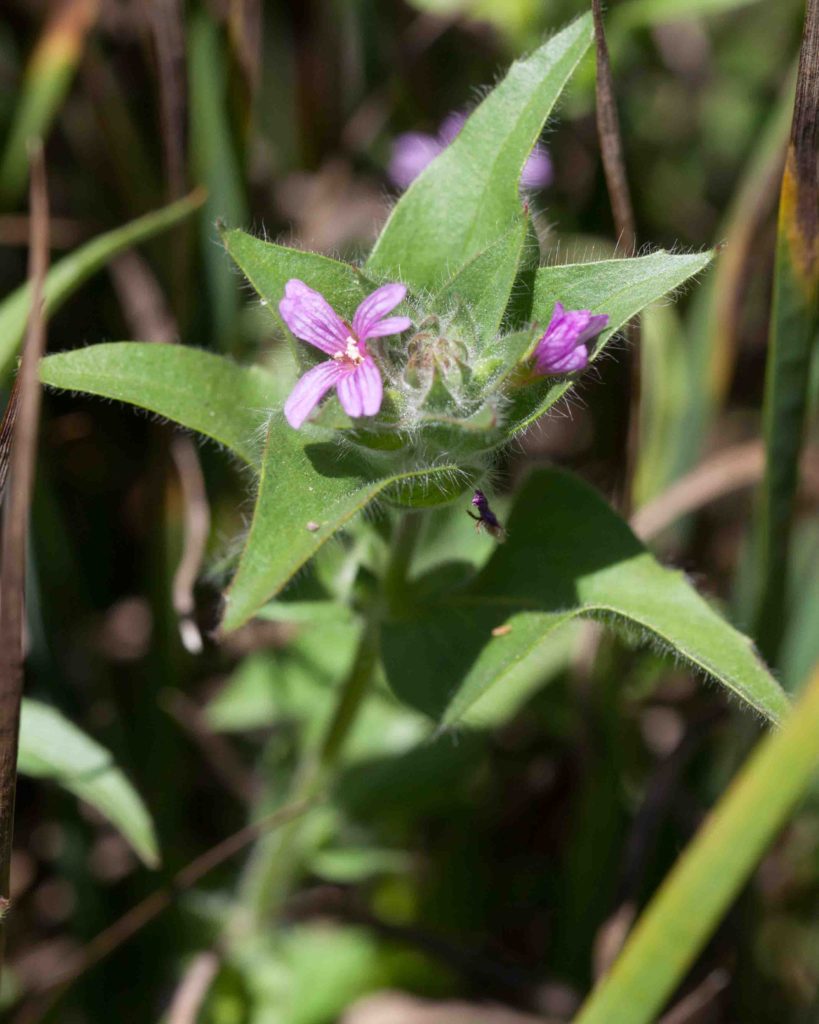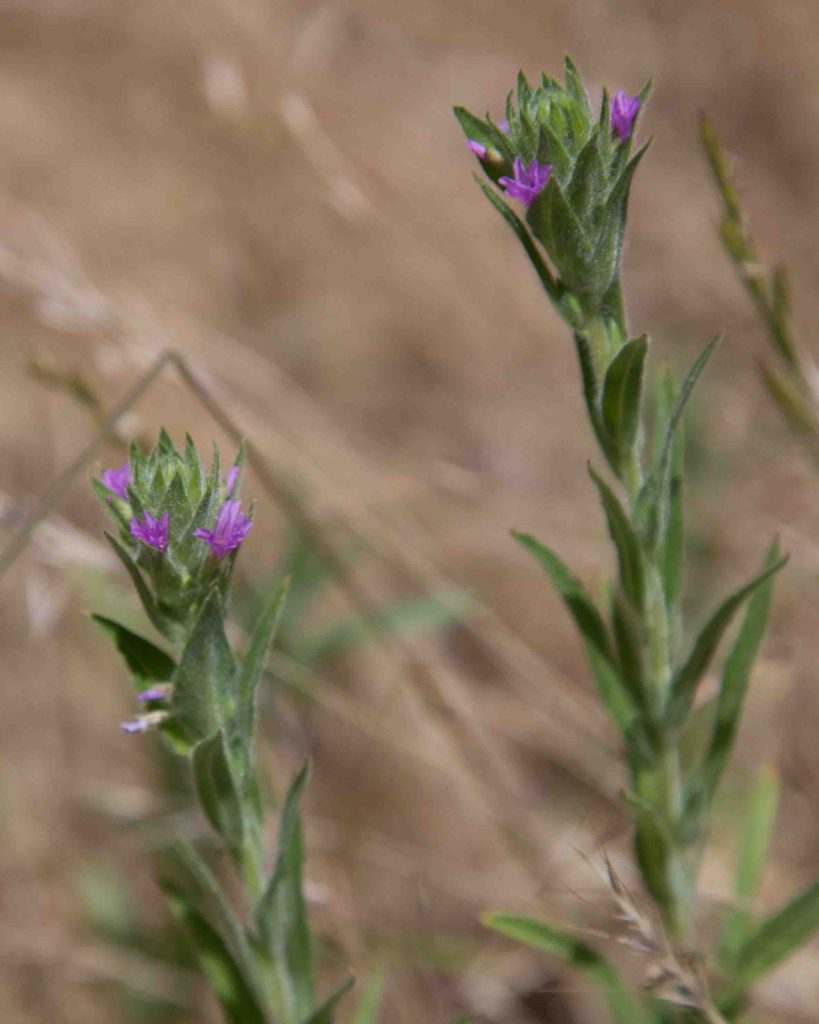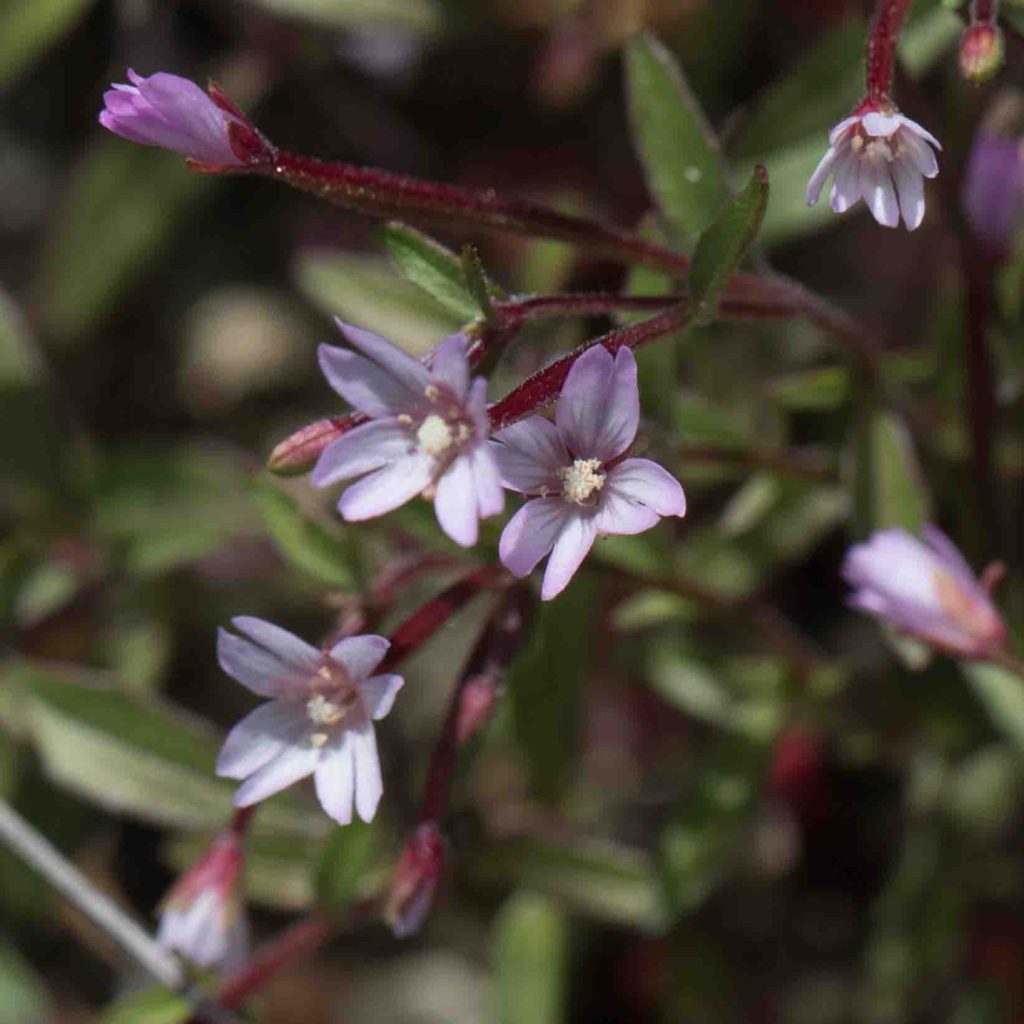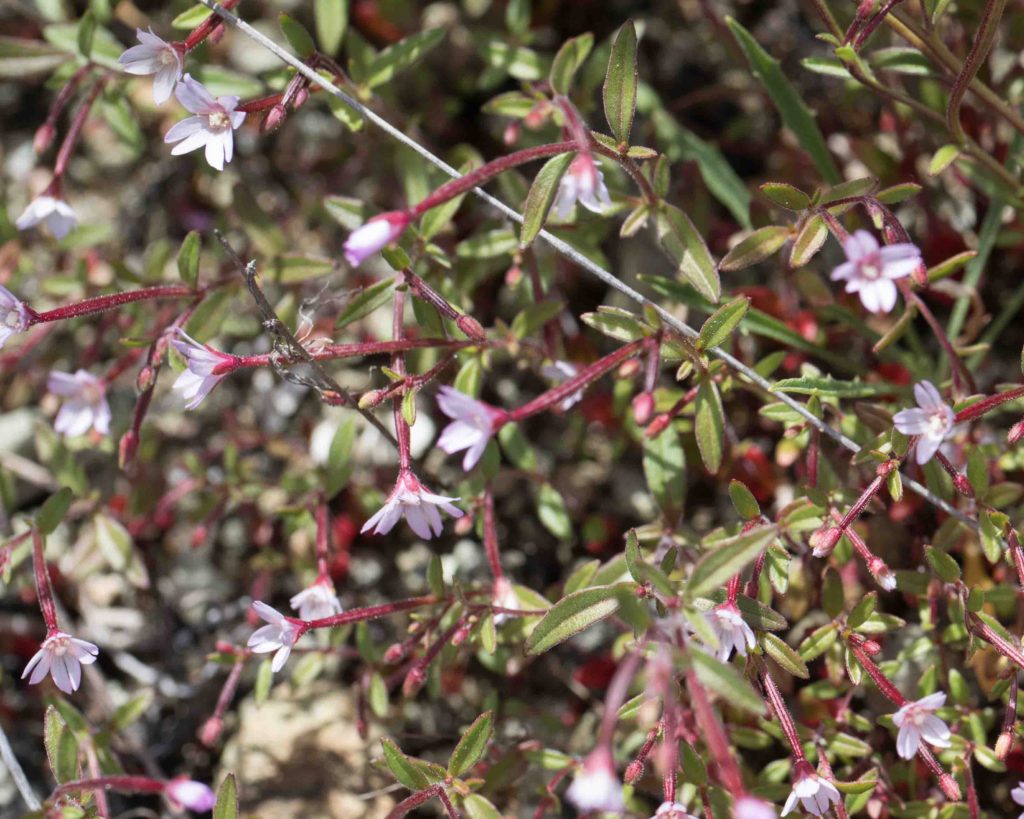Onagraceae: Evening-primrose Family — Epilobium
All members of the Evening-Primrose family have 4-petaled flowers, and many of them are showy. Despite the name, they do not necessarily bloom in the evening. There is a separate family called Primrose (Primulaceae).
Panicled Willow-herb – Epilobium brachycarpum
Blooms:
June–Sept
Plant Height:
0.3–2 m
Flower Size:
Medium
Origin:
Native
Habitat:
Dry, sunny places
Notes:
This differs from other Willow-herbs in its tall, panicled growth habit and its preference for dry, sunny areas. The flowers share the same distinctive willow-herb appearance, pink with deeply-cleft petals. Fruits have long, pointed segments, which pop open to reveal the seeds which are tufted with white, deciduous hairs.
California Fuchsia – Epilobium canum subsp. canum
Blooms:
June–Dec
Plant Height:
20–120 cm
Flower Size:
Large
Origin:
Native
Habitat:
Open, sunny places
Notes:
This perennial to sub-shrub is unmistakable. It has brilliant crimson or reddish-orange, trumpet shaped flowers, with long-exserted stamens and pistil. The stems are long, with many narrow green to gray-green leaves. Sometimes known as Zauschneria (its former scientific name). Most common in the Outer Coast Ranges, south of Monterey Bay. Photos #2 and 4 by CJH.
California Willow-herb – Epilobium ciliatum subsp. ciliatum
Blooms:
June–Oct
Plant Height:
50–120 cm
Flower Size:
Small
Origin:
Native
Habitat:
Moist meadows, streambanks, disturbed areas
Notes:
This and San Francisco Willow-herb (subsp. watsonii, see below) are both found in wet places, and can be confused. Leaves are lanceolate, generally opposite up to the inflorescence, and reducing in size towards the top of the stem. The inflorescence is openly branched, and not leafy. Flowers are small, with white to pink petals 2–6 mm long. Fruits are cylindrical with long, pointed segments. These pop open to reveal the seeds, which are tufted with white, deciduous hairs. Photo #3 by CJH.
San Francisco Willow-herb – Epilobium ciliatum subsp. watsonii
Blooms:
May–Oct
Plant Height:
30–150 cm
Flower Size:
Medium
Origin:
Native
Habitat:
Moist coastal bluffs, streambanks, disturbed areas
Notes:
This is similar in appearance to California Willow-herb (subsp. ciliatum, see above) but with a few differences. The most distinctive one is that its inflorescence is noticeably denser and leafier. Its flowers are rose-purple or pink, and longer (5-14 mm) than those of California Willow-herb. The leaves are not significantly reduced in size towards the top of the stem.
Dense-flowered Boisduvalia – Epilobium densiflorum
Blooms:
May–July
Plant Height:
up to 1.5 m
Flower Size:
Small
Origin:
Native
Habitat:
Streambanks and other moist places
Notes:
The boisduvalias differ from the other Epilobium by having seeds without the hair-tuft. This is a leafy plant, with the upper leaves noticeably hairy. Only the lower leaves are opposite. The inflorescence is a leafy, dense, bracted spike. The pink flowers have deeply notched petals, 3–10 mm long.
Minute Willow-herb – Epilobium minutum
Blooms:
Apr–Sept
Plant Height:
< 40 cm
Flower Size:
Small
Origin:
Native
Habitat:
Dry, disturbed areas, often after fires
Notes:
Like Panicled Willow-herb (Epilobium brachycarpum, see above), this is found in dry areas, a small, sometimes spreading plant with an open inflorescence. Its small flowers have the characteristic willow-herb cleft petals, white or pink, 2–5 mm long. The plant is glabrous to strigose throughout.
